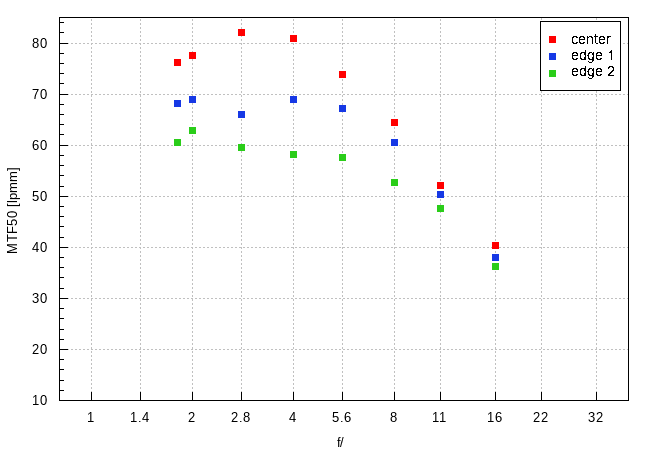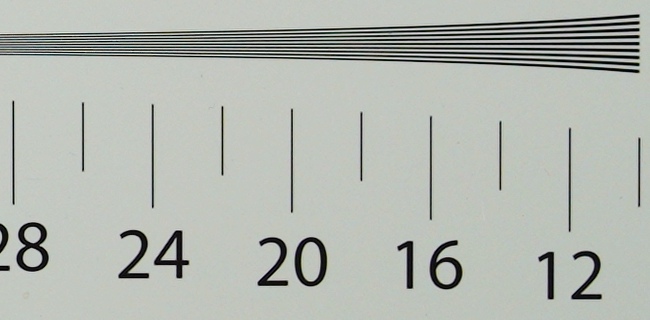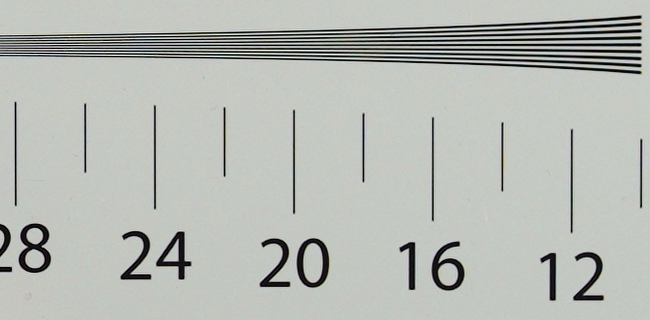Sony E 11 mm f/1.8
4. Image resolution
Now let's see how the Sony E 11 MM F/1.8 compares – its results in the frame centre and on its edge presents a graph below.

Please Support UsIf you enjoy our reviews and articles, and you want us to continue our work please, support our website by donating through PayPal. The funds are going to be used for paying our editorial team, renting servers, and equipping our testing studio; only that way we will be able to continue providing you interesting content for free. |
- - - - - - - - - - - - - - - - - - - - - - - - - - - - - - - - - - - - - - - - - - - - - - - -
Looking at the performance in the frame centre we immediately think about the Sony FE 20 mm f/1.8G and its brilliant resolution because here the situation is very similar. Already at the maximum relative aperture the results are excellent as they reach a very high level of 76 lpmm. With stopping down image quality ony improves so by f/2.8 and f/4.0 we got results exceeding 80 lpmm. By the way, the result by f/2.8 amounts to 82.1 lpmm so the Sony E 11 mm f/1.8 has a place among our record-holding lenses.
The performance on the edge of the frame is so interesting that we decided to modify a bit our testing procedure. The 'edge 2' measurement represents traditional results on the edge of the APS-C. As you see, it's quite untypical because the maximum value is reached by f/2.0 and amounts to almost 63 lpmm. Then image quality decreases a bit instead of getting better. By f/28 you see a slightly accented local minimum.
In order to make sure our measurements are correct we decided to use areas typically reserved for full frame lenses as places where we measure their resolution on the edge of the APS-C sensor. The appropriate results are labelled as 'edge 1'. As you can notice the local minimum by f/2.8 is even more accented. It doesn't change the fact that the lens performs very well – by f/2.0 and f/4.0 we see results of 70 lpmm. In the next chapter we are going to explain this situation in detail; let us just mention the fact that lateral chromatic aberration reaches its maximum level by f/2.8 and f/4.0 and, with the help of other off-axis aberrations such as astigmatism, it doesn't allow the lens to have a more typical resolution graph on the edge of the frame.
In order to finish the untypical performance topic we would like to add that our assessment of the Sony E 11 mm f/1.8 performance on the edge of the frame remains high. Already at the maximum relative aperture the lens is able to reach very high values, exceeding 60 lpmm. It would be foolish to expect a better performance from such a small, shapely and lightweight ultra-wide angle lens.
At the end of this chapter, traditionally, we present crops taken from photos of our resolution testing chart saved in JPEG format alongside RAW files which we used for the analysis above.
| Sony A7R III, JPEG, f/1.8 |
 |
| Sony A7R III, JPEG, f/2.8 |
 |






